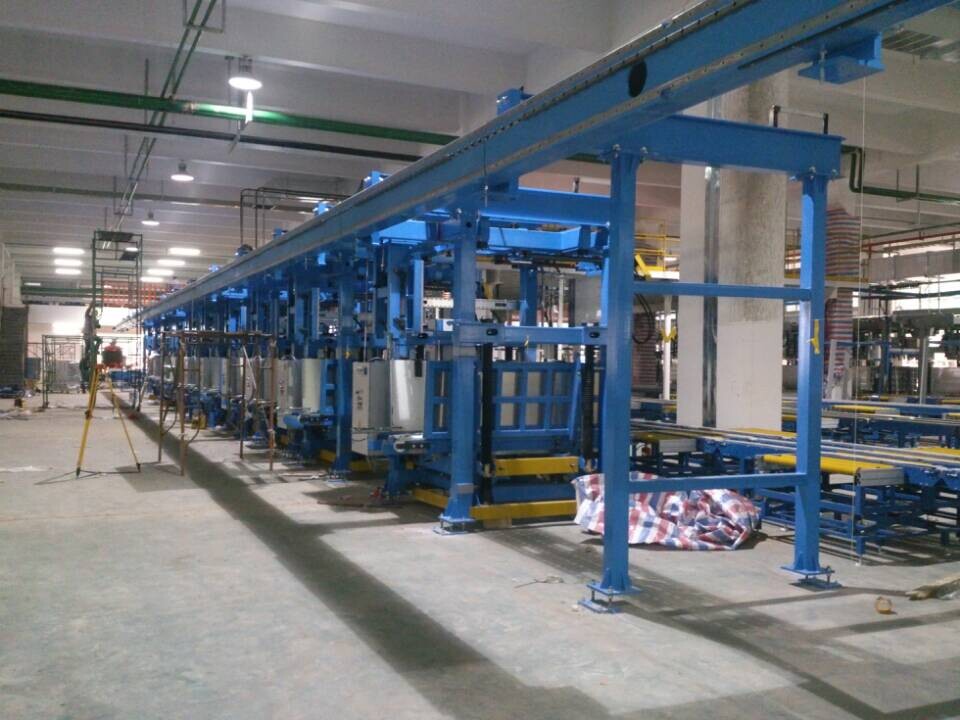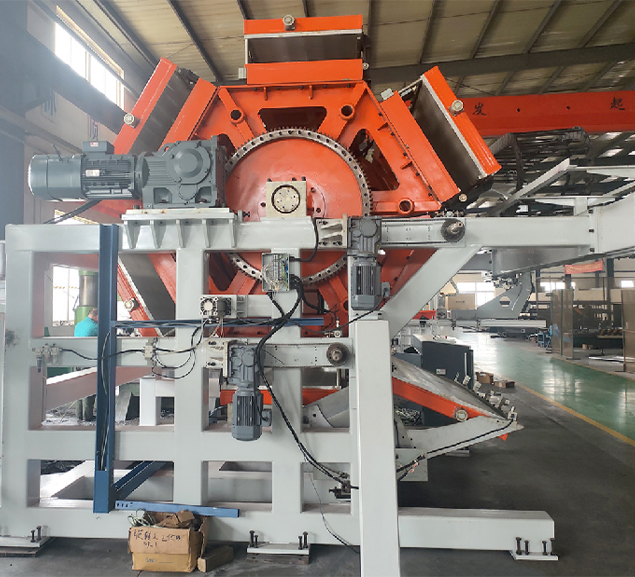In the chapter on industrial technology objectives of the China Refrigerator Industry Technology Roadmap (2025 Edition), there is a passage stating: “Research on alternative technologies for polyurethane foaming agents, development of new foaming technologies with high strength and low thermal conductivity, and continuous optimization and innovation of foaming processes will be carried out to promote the development and application of high-performance, low-degradation, and environmentally friendly polyurethane foam materials.” Through these concise yet guiding words, the development trends of polyurethane foaming technology in the refrigerator industry are clearly revealed: first, reducing the thermal conductivity of rigid polyurethane foam; second, improving production efficiency; and third, promoting a green and low-carbon transformation.

Reducing Thermal Conductivity to Enhance Refrigerator Energy Efficiency
Rigid polyurethane foam is the primary insulation material used in refrigerator doors and cabinets, and it plays a critical role in improving overall refrigerator performance. Among various performance indicators, energy efficiency stands out as a key measure. According to the updated China Refrigerator Industry Technology Roadmap, by 2030, the average energy efficiency level of refrigerators is expected to improve by 25% compared to 2024, and by another 25% by 2035 compared to 2030. At the 2024 China Household Appliance Technology Conference (Refrigerator Session), Cheng Jianhong, a researcher from the China National Institute of Standardization, revealed that the revision of refrigerator energy efficiency standards is scheduled to be completed by mid-2025 and released by the end of the year. This underscores the imperative for improving refrigerator energy efficiency.
Amid this transformation, as an upstream sector in the refrigerator industry chain, the rigid polyurethane foam industry has remained diligent and innovative, achieving reductions in thermal conductivity through multiple technical pathways, thereby supporting the enhancement of refrigerator energy performance.
Raw Material Innovations Drive Progress
In terms of raw materials, leading enterprises have made significant progress in lowering thermal conductivity through technological advancements in polyether polyols and polymeric MDI.
Wanhua Chemical, a leader in polyurethane raw materials, supplies both polymeric MDI and polyether polyol blends for home appliance insulation. In 2024, Wanhua Chemical’s domestic MDI production capacity reached 3.1 million tons, including 1.1 million tons in Yantai, 1.2 million tons in Ningbo, and 800,000 tons in Fujian. Its polyether polyol capacity stands at 550,000 tons. Wanhua’s ultra-low energy foam technology has achieved a thermal conductivity reduction of up to 10% in polyurethane foam, while also optimizing thermal distribution to enhance insulation’s contribution to energy savings.
Hongbaoli leads the industry in refrigerator-specific polyurethane polyol blend capacity, with an annual production capacity of 150,000 tons. According to Tianyancha intellectual property data, in 2024, Jiangsu Hongbaoli Group Co., Ltd. filed a patent titled “Preparation Method of Rigid Polyurethane Foam, Foam Material and Its Application” (Publication No. CN202410372808.6). The patent abstract states that the method allows for a higher maximum dosage of tetramethylsilane while maintaining its stability and uniform distribution within the formulation, resulting in rigid polyurethane foam with low density and low thermal conductivity.
Foreign Brands Maintain Technical Strength
While foreign brands’ market share in raw materials has declined, with only BASF and Dow Chemical remaining active in the competition, their technological innovation capabilities are still widely recognized and remain irreplaceable in the industry.
For instance, Dow has partnered with Kanglong Equipment to develop vacuum foaming technology, which has been applied in the refrigerator sector for several years. The core principle of this technology is to improve foam fluidity and uniformity in density, thereby reducing the size of microcells and lowering thermal conductivity. “Vacuum foaming technology enables appliance manufacturers to improve energy efficiency by 10% without increasing costs,” a Dow representative revealed.
Freezers Share the Same Pursuit of Low Thermal Conductivity
The freezer industry shares the same goals regarding thermal conductivity of insulation layers as the refrigerator industry.
Aucma stated that the application trends of rigid polyurethane foam in freezers mainly focus on two aspects. First, high-performance polyurethane insulation technology, which utilizes vacuum extraction during the foaming process to promote more uniform flow of materials within the cabinet, thereby enhancing foam strength and uniformity in thermal distribution. Second, technologies such as microcell foaming, hollow microspheres, and materials with even lower thermal conductivity are expected to see broader application in the freezer sector. At present, Aucma has improved insulation performance and reduced thermal conductivity by optimizing production processes and raw materials, combined with the use of advanced polyurethane foaming technology.
Ultra-Thin Design Trends Push Equipment Upgrades
Ultra-thin design is a key trend in refrigerator development. As ultra-thin refrigerators gain market share, manufacturers demand polyurethane foam with more uniform density and better quality. This necessitates upgrades to pre-mixing equipment, shifting from single-gun to multi-gun simultaneous injection systems.
“For example, the five-gun, five-system injection technology used for high-end, ultra-thin built-in kitchen refrigerators allows for thinner insulation layers while achieving low thermal conductivity. This places stricter demands on foam density uniformity,” explained Zhou Zhenhua.
A Hisense R&D engineer told Electrical Appliance magazine: “Many domestic refrigerator factories now use four- or five-gun pre-mixing systems on the back side to achieve better insulation performance even as doors and cabinets become thinner.”

Enhancing Production Efficiency Across Multiple Stages
In addition to the relentless pursuit of energy efficiency, the refrigerator industry is equally committed to improving production efficiency. The technological optimization of rigid polyurethane foam materials aligns closely with the refrigerator sector’s drive for high-efficiency manufacturing.
“Improving production efficiency in the refrigerator industry mainly involves increasing production frequency and advancing digitalization,” said Zhou Zhenhua, Sales Manager of Runying Polymer Industry Co., Ltd. (China region). “By high frequency, we mean increasing production speed. Previously, it took 30 seconds or even a minute to produce one refrigerator. Now, the goal is to bring that down to 18 seconds, or even just 9 seconds per unit. Digitalization refers to the ability to track both foaming equipment and raw material systems online, enabling a fully digitized process that boosts overall efficiency.”
To achieve high-frequency production, reducing demolding time is a key technological focus in the industry.
Wanhua Chemical has developed a rapid demolding polyether blend technology that significantly boosts production efficiency and lowers manufacturing costs. A Wanhua representative shared a case study: “Using a standard 300-second demolding system, a factory with 3,200 workers could produce 3.5 million refrigerators annually. After upgrading to a 130-second fast demolding system, the workforce was reduced to 2,800 while annual output increased to 6.7 million units. The manufacturing cost per unit dropped by 55%. We have now developed a 70-second ultra-fast demolding system, which is among the most advanced in the industry.”
Dow’s vacuum foaming technology also cuts demolding time by nearly 50%, greatly increasing production cycles and enhancing overall efficiency.
Mold changeover speed is another critical factor for improving productivity. A representative from VƯỢT QUÁ explained that mold changing now includes two approaches: automatic and rapid mold change. Previously, it would take 30 minutes to an hour to change molds, but our customers now demand that the process be completed within 10 minutes. For rapid mold changes, fixtures on the foaming production line must be redesigned. Automatic mold changing is even faster—one fixture on the production line can hold two molds that flip up or down as needed, reducing mold change time to just 3–5 minutes.
Furthermore, to address challenges such as refrigerator inner doors easily falling off during mold clamping and the high labor intensity of assembling door liners, VƯỢT QUÁ has developed a fully automated foaming line for refrigerator doors. This system achieves unmanned assembly of door shells and liners, automated mold preheating, and mold switching. As a result, production costs for refrigerator factories are significantly reduced, product reliability is improved, and manufacturing efficiency is greatly enhanced.

Green and Low-Carbon Development Across the Entire Industrial Chain Powers the Rigid Polyurethane Foam Industry
According to the updated China Refrigerator Industry Technology Roadmap (2025), by 2035, green refrigerator products are expected to account for 30% of the market—a concrete target pointing to the industry’s green transformation. In fact, in recent years, Covestro, together with Haier and Midea, has already unveiled green refrigerators made with low-carbon raw materials at the China International Import Expo (CIIE).
To support the refrigerator industry in achieving low-carbon and energy-efficient product upgrades, Wanhua Chemical offers solutions in three key areas:
Green Raw Materials: Wanhua has developed bio-based polyether, reducing carbon emissions from raw materials. Some of these products have already received relevant certifications.
Green Processes: The development and application of ultra-low thermal conductivity polyether blends by Wanhua significantly improve the energy efficiency of refrigerators and water heaters, contributing to the industry’s energy-saving upgrades.
Green Recycling: Wanhua has also developed a recycling technology for used polyurethane foams, enabling the reconstitution of polyurethane materials at the molecular level through chemical reactions. This supports a circular economy. A pilot plant for polyurethane rigid foam recycling was successfully launched in 2022.
Although HFC-245fa Và LBA will face usage restrictions in the European market starting in 2026, they still hold strong competitive advantages in China and other export markets. Recently, with the support of CarbonLink, BlueStar-Honeywell New Material Co., Ltd. completed carbon footprint assessments for three core products: HFC-245fa, HFO-1233zd(E), and HFO-1234zd(E). These assessments have been certified by the authoritative third-party agency TÜV SÜD, providing valuable support for the low-carbon development of refrigerator OEMs.
UREXCEED Responds Proactively to Empower the Refrigerator Manufacturing Value Chain
These efforts represent how China’s leading refrigerator polyurethane raw material and equipment suppliers are aligning with the evolving demands of the refrigerator industry. At VƯỢT QUÁ, we are keeping pace with our peers and continuously making progress. In response to customer needs, we have developed inner liners for freezer molds using a variety of materials to suit different budget levels. We’ve also designed automatic mold-changing fixtures, enabling customers to produce multiple models simultaneously with greater flexibility.
Moreover, we offer a diverse range of freezer and refrigerator production lines—from manual molds to semi-automated systems to fully automated production lines. From raw material preparation to production line design, UREXCEED provides end-to-end solutions for your refrigerator manufacturing investment.
So, if you’re optimistic about the future of refrigerator products and looking to start your own business in this sector, let VƯỢT QUÁ be your trusted partner.
